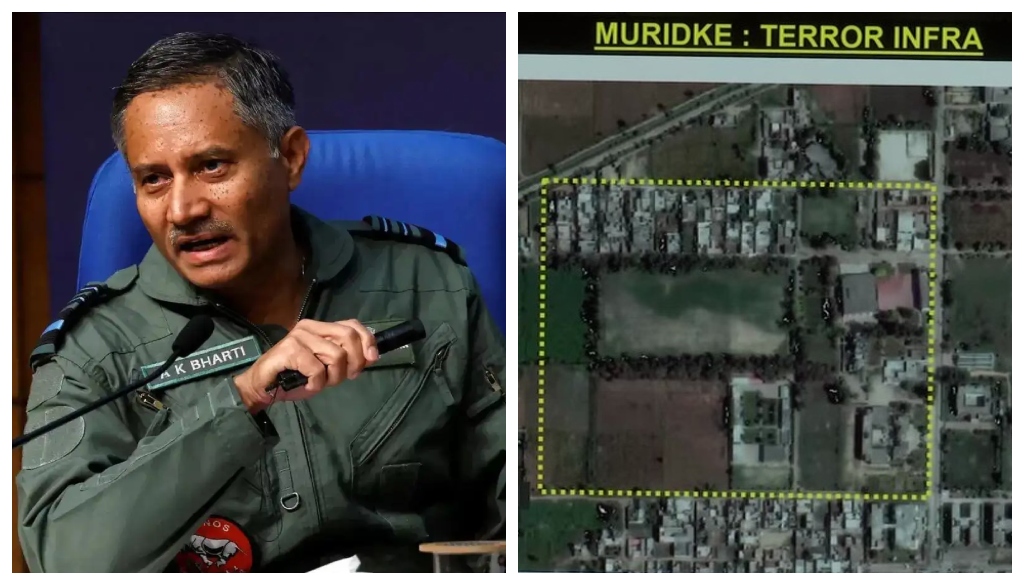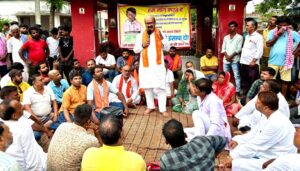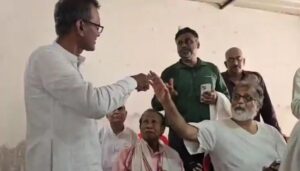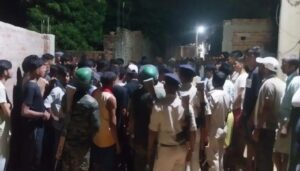‘भय बिन होई न प्रीति’: The Bihari Air Marshal Who Quoted Ramcharitmanas As He Led India’s Response to Pahalgam Attack

Patna: During a press briefing on Operation Sindoor, India’s air retaliation following the deadly terror strike in Pahalgam, Air Marshal Awadesh Kumar Bharti paused, looked up, and recited a quatrain from the Ramcharitmanas.
“Vinay na maanat jaladh jad, gaye teen din beeti.
Bole Ram sakop tab, bhay binu hoy na preeti.”
(The sea was stubborn and did not listen to the request, three days passed. Then Ram said angrily, there is no love without fear.)
For Bharti, the Director General Air Operations (DGAO) at the Indian Air Force, these lines carried more than symbolism—they captured the calculated ferocity underpinning India’s response to the Pahalgam massacre, where 26 tourists lost their lives on April 22.
Since that grim day, the IAF was engaged in precision air strikes into Pakistan’s hinterland, targeting militant infrastructure and key assets. At the nerve centre of this operation is Bharti, a son of Bihar’s Purnia district, orchestrating the missions from Air Headquarters in New Delhi.
The strikes, carried out under the codename Operation Sindoor, have not only inflicted heavy damage but, according to defence sources, forced Islamabad to seek an urgent ceasefire—an outcome carefully engineered under Bharti’s command.
But behind the uniform, rank, and strategic briefings lies a personal story rooted in the farmlands of eastern Bihar. Bharti was born in Jhunni Kalan, a village tucked away in Purnia, to Jeevchhalal Yadav, a retired accountant with the Kosi Project, and Urmila Devi of Srinagar Hata. His two brothers still live and work in the district, reminders of the life Bharti left behind when he entered Sainik School Tilaiya.
It was there that Bharti’s life charted a new trajectory—one of relentless discipline, ambition, and service. From Tilaiya, he entered the National Defence Academy in Pune, where he not only joined the IAF’s fighter stream in June 1987 but also graduated top of his course, earning the coveted Sword of Honour, awarded to the best all-round cadet.
His career since has been as varied as it is distinguished. He completed the prestigious Staff Course at Wellington and the National Defence College in New Delhi. He has commanded frontline fighter bases, held key operational and strategic roles both within India and abroad, and played a crucial part in shaping the IAF’s tactical doctrines.
In Prayagraj, as Senior Staff Officer (SASO) of Central Air Command, Bharti managed air operations during the sprawling Maha Kumbh, ensuring the safety of millions of pilgrims. But it is in his current role as the chief architect of Operation Sindoor that Bharti has stepped onto the national stage.
Back in Purnia, Bharti’s ascent is a point of quiet pride. Social worker Vijay Srivastava, who was briefed by retired IAF officers on Bharti’s role, said, “It is a proud moment for Bihar, and especially for Purnia, to see one of our own sons at the forefront of the nation’s defence.”
For Air Marshal AK Bharti, quoting Ram is not just about ancient texts—it is about the timeless principle that, sometimes, fear must precede peace.





